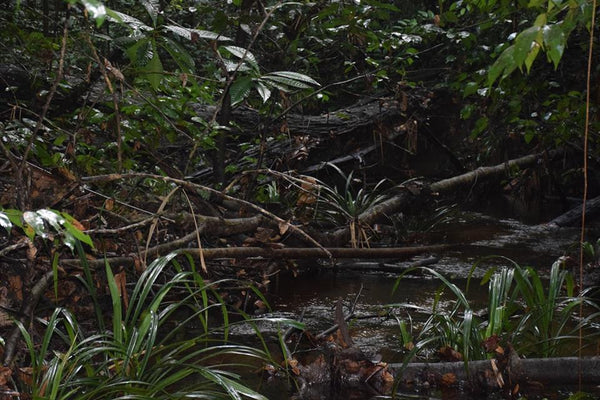- Continue Shopping
- Your Cart is Empty
A path through the forest...
To me, one of the most compelling aquatic scenes in Nature is the sight of a stream meandering into the forest.

There is something that calls to me- beckons me to explore, to take not of its intricate details- and to replicate some of its features in an aquarium- sometimes literally, or sometimes,. just taking components that I find compelling and utilizing them.
An important consideration when contemplating such a replication in our tanks is to consider just how these little forests streams form. Typically, they are either a small tributary of a larger stream, with the path carved out by rain or erosion over time. In other situations, they may simply be the result of an overflowing tributary during the rainy season, and as the waters recede later in the year, they evolve into smaller streams meandering through vegetation.
Those little streams fascinate me.

In Brazil, they are known as igarape, derived from the native Brazilian Tupi language. This descriptor incorporates the words "ygara" (canoe) and "ape"(way, passage, or road) which literally translates into "canoe way"- a small body of water which forms a route navigable by canoes.
A literal path through the forest!

These interesting little tributaries areare shaded by trees at the margins, and often cut for many kilometers through dense rain forest. The bottoms of these tributaries- formerly forest floor- are often covered with seed pods, twigs, leaves, and other botanical materials from the vegetation above and surrounding them.
Although igapó forests are characterized by sandy acidic soils that have a low nutrient content, the tributaries that feed them are often found over a fine-grained, whitish sand, so as an aquarist, you a a lot of options for substrate!

In this world of decomposing leaves, submerged logs, twigs, and seed pods, there is a surprising diversity of life forms which call this milieu home. And each one of these organisms has manages to eke out an existence and thrive.
A lot of hobbyists not familiar with our aesthetic tastes will ask what the fascination is with throwing palm fronds and seed pods into our tanks, and I tell them that it's a direct inspiration from nature! Sure, the look is quite different than what has been proffered as "natural" in recent years- but I'd guarantee that, if you donned a snorkel and waded into one of these habitats, you'd understand exactly what we are trying to represent in our aquariums in seconds!

We also happen to like the way it looks, of course!
These habitats not only provide physical environments for fishes, the vegetation surrounding them offers a diversity of foods, ranging from terrestrial insects to fruits. Fishes commonly feed on the fruits and nuts knocked down from overhanging trees by various animals which reside in the forest canopy, such as birds and monkeys.
Our inclusion of softer botanical materials in our biotope-inspired aquariums represents this accumulation which literally feeds the fishes residing in the igarape.

When materials from the trees fall to the forest floor, only to become submerged when the waters reach them, amazing physical and ecological features form. They form barriers, redirect flow, accumulate leaves, and impact what becomes the "underwater topography" of these unique habitats.

I think so. I think that the representation of the igarape habitat in our aquariums is an exercise in both aesthetics and function.
Learning more about the dynamics of natural habitats and the ecology of the surrounding terrestrial environments is just one fascinating and compelling area of study that we as aquarists can really get into. Yes, it requires some study. It requires trying some new and seemingly wacky ideas (encouraging the accumulation of detritus, decomposing leaves, and epiphytic biofilm growth, for one thing!), and embracing some different aesthetics.
However, the potential for learning new things about our fishes, and perhaps being able to help them live longer, healthier lives, and to spawn them more reliably and productively, lessening our reliance on the collection of some wild specimens, could be significant.

It's all out there for us to learn. Investigating a path through the forest might just lead to a new world of discovery for the hobby.
Stay adventurous. Stay curious. Stay creative. Stay observant. Stay undaunted...
And Stay Wet.
Scott Fellman
Tannin Aquatics.







Scott Fellman
Author